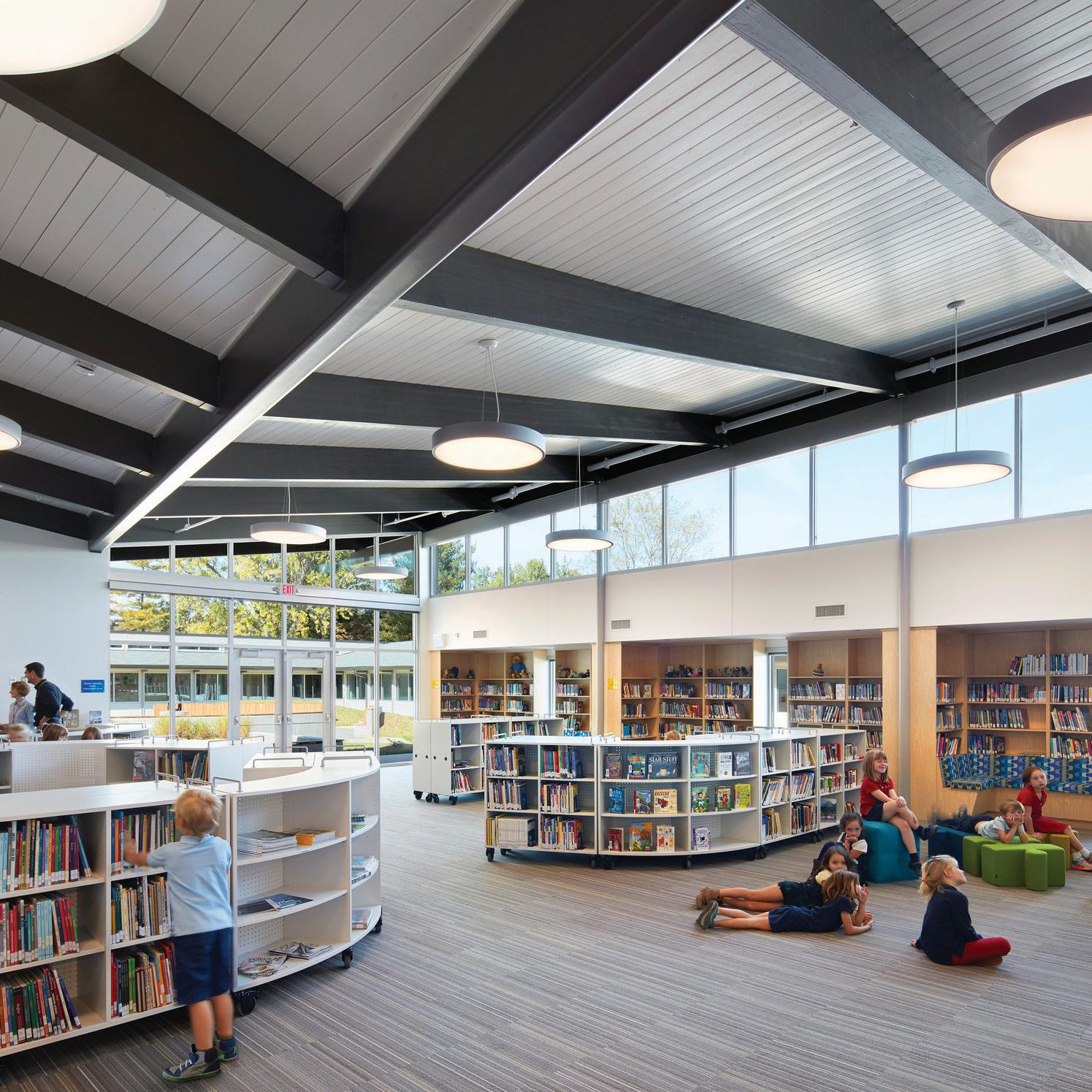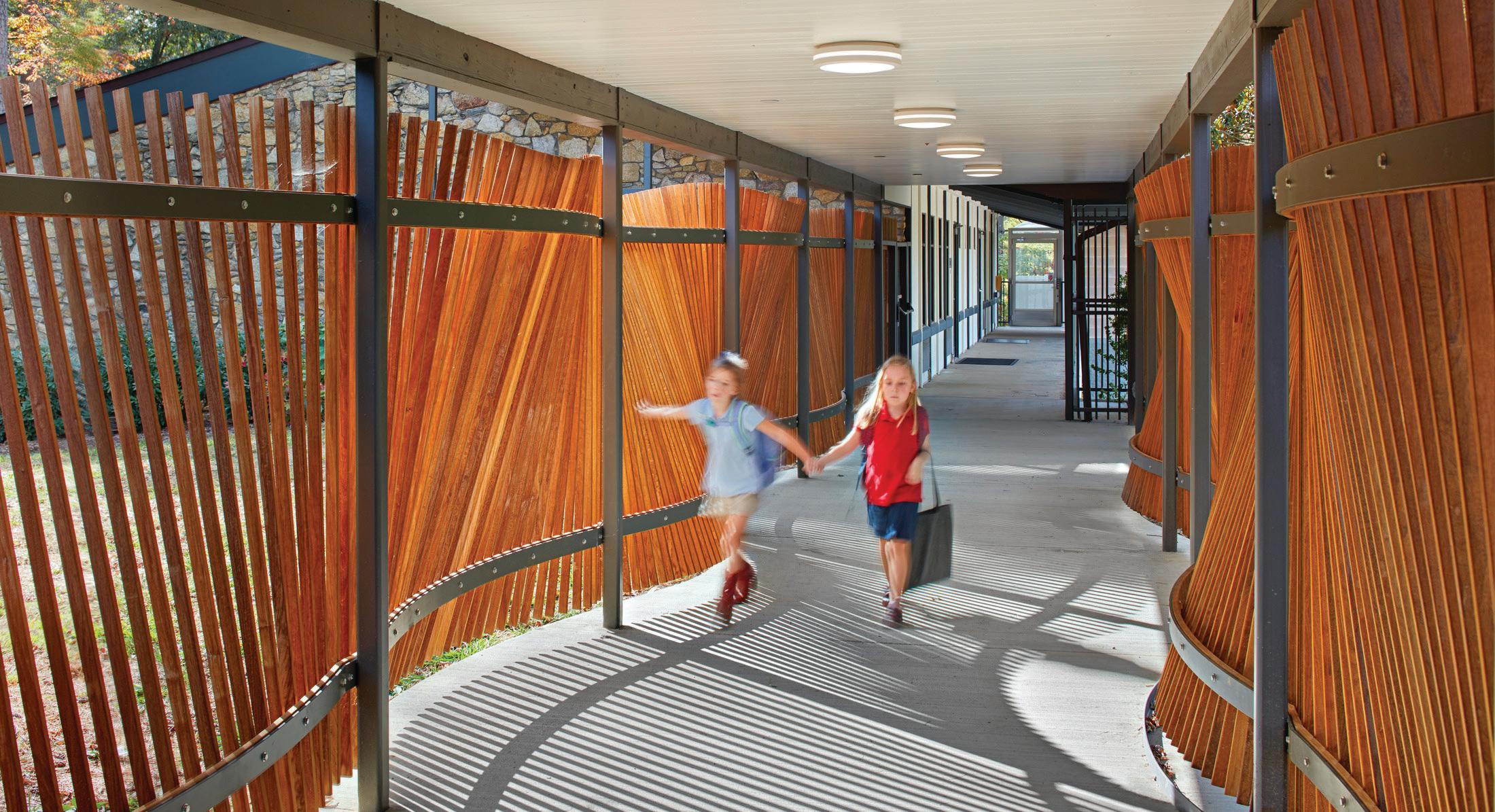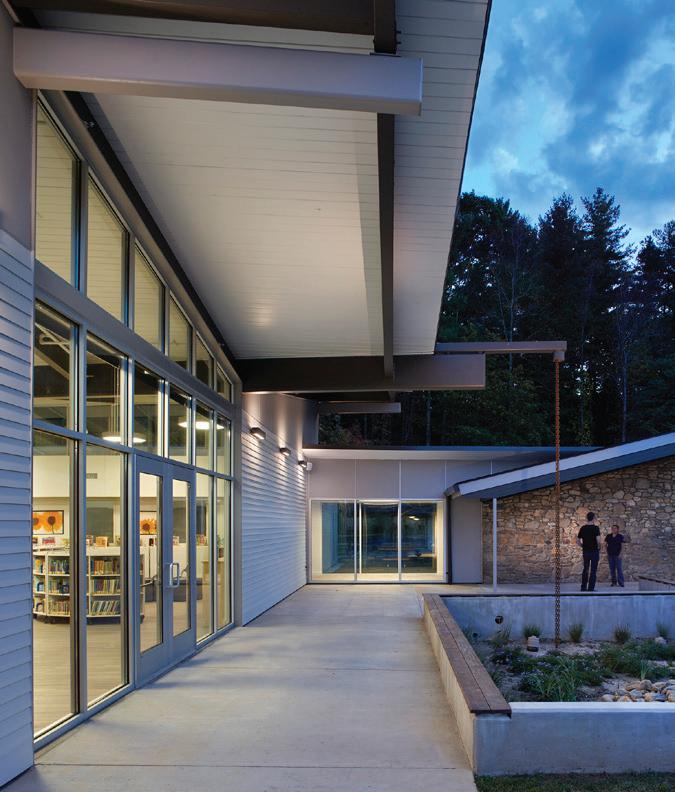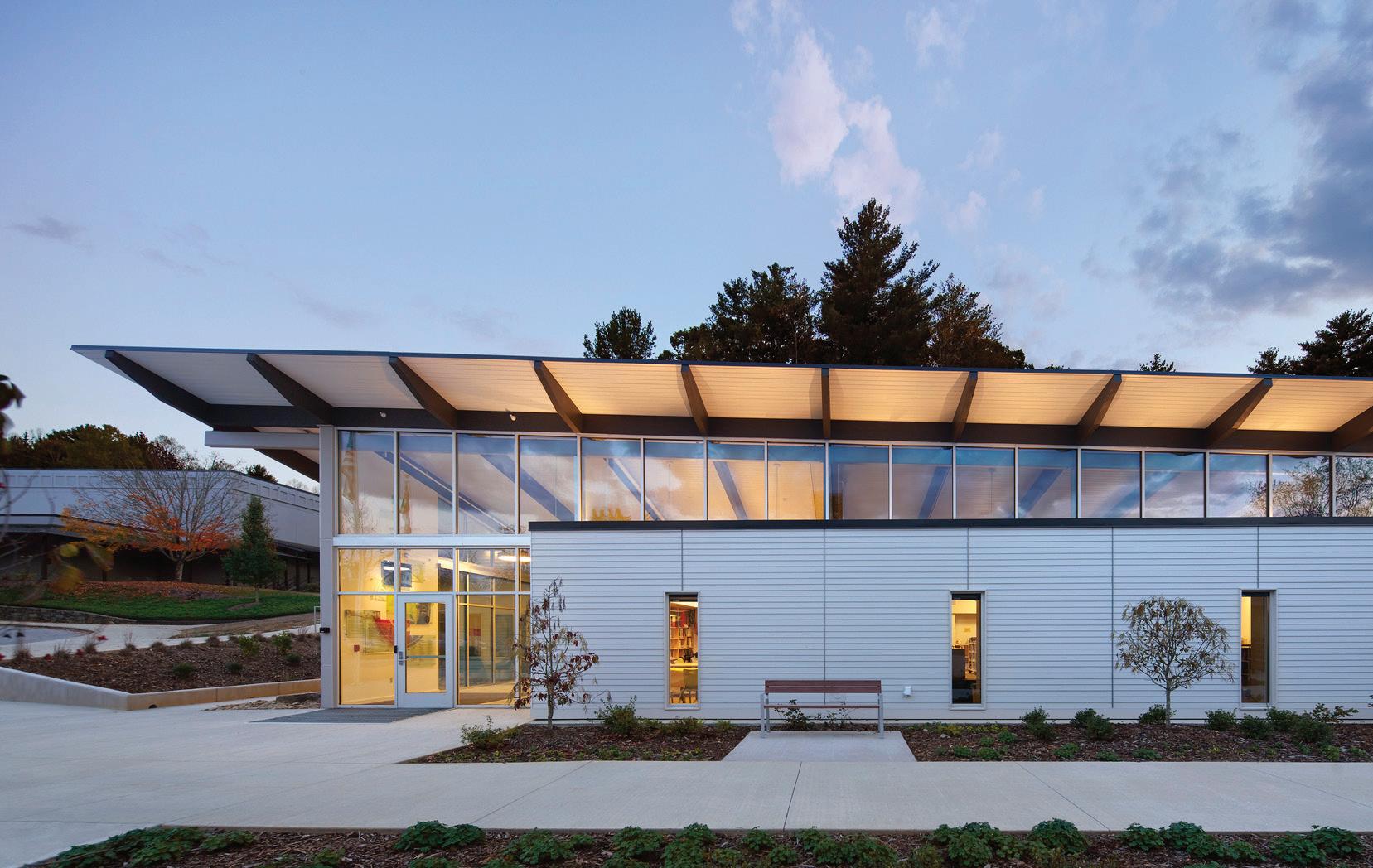
1 minute read
CAROLINA DAY LOWER SCHOOL
The Lower School at Carolina Day serves first through fifth graders in an inquirybased learning environment, focused on supporting student growth and providing problem solving opportunities. Our designers worked with school representatives to create a solution that responded to their needs, enhanced indooroutdoor connectivity, and positioned the school to meet changing trends in K-12 education.
The resulting renovation and addition has formed a facility that instructs by design and provides light-filled, engaging spaces for students, teachers, and staff. More than 80% of the project is adaptive reuse, with 100% of the existing structure and roof decking reused. Additionally, the use of wood as the primary building material for the addition reduces the project’s embodied carbon.
The building serves as a teacher, with windows into interior walls to reveal the MEP systems and a butterfly roof that directs rainwater into a bio-retention pond. Outside, the courtyard is more than a
Asheville, North Carolina 70% place to gather, learn, and play; it handles 100% of stormwater (roof and site) via the retention pond and features native, educational landscaping as well as earthen berms for free play.
The school is surrounded by Asheville’s outdoor beauty and care was taken in the renovation design to reinforce this indooroutdoor connection. Generous natural light abounds, with 95% of occupied spaces having direct exterior views and receiving natural daylight. In particular, all classrooms have direct views to the outside while clerestory windows serve to balance daylighting. In the gymnasium, the conversion of existing ventilation panels to clerestory windows allows the gym to be used with no artificial lighting at most times. A new HVAC system improved both climate control and energy efficiency. The renovated school now uses 42% less energy than the baseline. Additionally, the R-23 walls exceed the North Carolina energy code by 53%. By integrating sustainable design elements along with K-12 design best practices, the school reflects its region’s commitment to protecting the environment while enabling children to learn and explore.














